Subasish Das
A Dimensionality-Reduced XAI Framework for Roundabout Crash Severity Insights
Sep 15, 2025Abstract:Roundabouts reduce severe crashes, yet risk patterns vary by conditions. This study analyzes 2017-2021 Ohio roundabout crashes using a two-step, explainable workflow. Cluster Correspondence Analysis (CCA) identifies co-occurring factors and yields four crash patterns. A tree-based severity model is then interpreted with SHAP to quantify drivers of injury within and across patterns. Results show higher severity when darkness, wet surfaces, and higher posted speeds coincide with fixed-object or angle events, and lower severity in clear, low-speed settings. Pattern-specific explanations highlight mechanisms at entries (fail-to-yield, gap acceptance), within multi-lane circulation (improper maneuvers), and during slow-downs (rear-end). The workflow links pattern discovery with case-level explanations, supporting site screening, countermeasure selection, and audit-ready reporting. The contribution to Information Systems is a practical template for usable XAI in public safety analytics.
Model Context Protocols in Adaptive Transport Systems: A Survey
Aug 26, 2025Abstract:The rapid expansion of interconnected devices, autonomous systems, and AI applications has created severe fragmentation in adaptive transport systems, where diverse protocols and context sources remain isolated. This survey provides the first systematic investigation of the Model Context Protocol (MCP) as a unifying paradigm, highlighting its ability to bridge protocol-level adaptation with context-aware decision making. Analyzing established literature, we show that existing efforts have implicitly converged toward MCP-like architectures, signaling a natural evolution from fragmented solutions to standardized integration frameworks. We propose a five-category taxonomy covering adaptive mechanisms, context-aware frameworks, unification models, integration strategies, and MCP-enabled architectures. Our findings reveal three key insights: traditional transport protocols have reached the limits of isolated adaptation, MCP's client-server and JSON-RPC structure enables semantic interoperability, and AI-driven transport demands integration paradigms uniquely suited to MCP. Finally, we present a research roadmap positioning MCP as a foundation for next-generation adaptive, context-aware, and intelligent transport infrastructures.
ST-GraphNet: A Spatio-Temporal Graph Neural Network for Understanding and Predicting Automated Vehicle Crash Severity
Jun 09, 2025Abstract:Understanding the spatial and temporal dynamics of automated vehicle (AV) crash severity is critical for advancing urban mobility safety and infrastructure planning. In this work, we introduce ST-GraphNet, a spatio-temporal graph neural network framework designed to model and predict AV crash severity by using both fine-grained and region-aggregated spatial graphs. Using a balanced dataset of 2,352 real-world AV-related crash reports from Texas (2024), including geospatial coordinates, crash timestamps, SAE automation levels, and narrative descriptions, we construct two complementary graph representations: (1) a fine-grained graph with individual crash events as nodes, where edges are defined via spatio-temporal proximity; and (2) a coarse-grained graph where crashes are aggregated into Hexagonal Hierarchical Spatial Indexing (H3)-based spatial cells, connected through hexagonal adjacency. Each node in the graph is enriched with multimodal data, including semantic, spatial, and temporal attributes, including textual embeddings from crash narratives using a pretrained Sentence-BERT model. We evaluate various graph neural network (GNN) architectures, such as Graph Convolutional Networks (GCN), Graph Attention Networks (GAT), and Dynamic Spatio-Temporal GCN (DSTGCN), to classify crash severity and predict high-risk regions. Our proposed ST-GraphNet, which utilizes a DSTGCN backbone on the coarse-grained H3 graph, achieves a test accuracy of 97.74\%, substantially outperforming the best fine-grained model (64.7\% test accuracy). These findings highlight the effectiveness of spatial aggregation, dynamic message passing, and multi-modal feature integration in capturing the complex spatio-temporal patterns underlying AV crash severity.
Comparative Analysis of Advanced AI-based Object Detection Models for Pavement Marking Quality Assessment during Daytime
Mar 17, 2025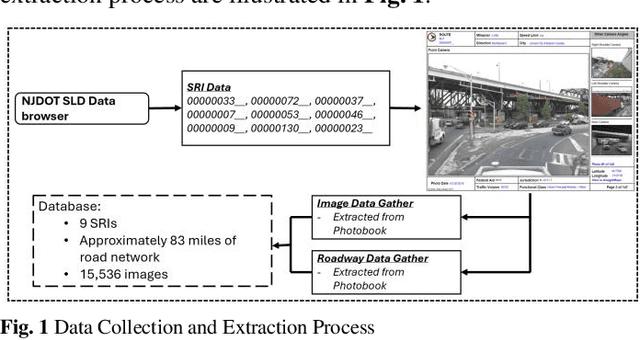

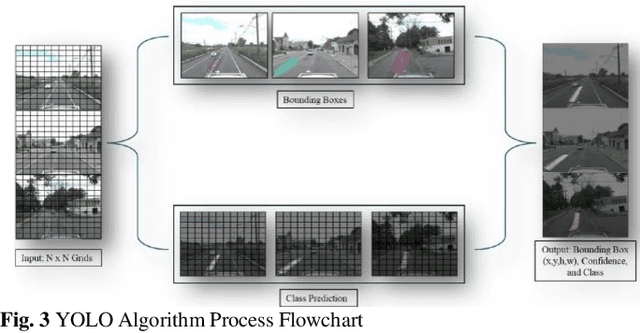

Abstract:Visual object detection utilizing deep learning plays a vital role in computer vision and has extensive applications in transportation engineering. This paper focuses on detecting pavement marking quality during daytime using the You Only Look Once (YOLO) model, leveraging its advanced architectural features to enhance road safety through precise and real-time assessments. Utilizing image data from New Jersey, this study employed three YOLOv8 variants: YOLOv8m, YOLOv8n, and YOLOv8x. The models were evaluated based on their prediction accuracy for classifying pavement markings into good, moderate, and poor visibility categories. The results demonstrated that YOLOv8n provides the best balance between accuracy and computational efficiency, achieving the highest mean Average Precision (mAP) for objects with good visibility and demonstrating robust performance across various Intersections over Union (IoU) thresholds. This research enhances transportation safety by offering an automated and accurate method for evaluating the quality of pavement markings.
Crash Severity Analysis of Child Bicyclists using Arm-Net and MambaNet
Mar 14, 2025Abstract:Child bicyclists (14 years and younger) are among the most vulnerable road users, often experiencing severe injuries or fatalities in crashes. This study analyzed 2,394 child bicyclist crashes in Texas from 2017 to 2022 using two deep tabular learning models (ARM-Net and MambaNet). To address the issue of data imbalance, the SMOTEENN technique was applied, resulting in balanced datasets that facilitated accurate crash severity predictions across three categories: Fatal/Severe (KA), Moderate/Minor (BC), and No Injury (O). The findings revealed that MambaNet outperformed ARM-Net, achieving higher precision, recall, F1-scores, and accuracy, particularly in the KA and O categories. Both models highlighted challenges in distinguishing BC crashes due to overlapping characteristics. These insights underscored the value of advanced tabular deep learning methods and balanced datasets in understanding crash severity. While limitations such as reliance on categorical data exist, future research could explore continuous variables and real-time behavioral data to enhance predictive modeling and crash mitigation strategies.
Applying Tabular Deep Learning Models to Estimate Crash Injury Types of Young Motorcyclists
Mar 13, 2025Abstract:Young motorcyclists, particularly those aged 15 to 24 years old, face a heightened risk of severe crashes due to factors such as speeding, traffic violations, and helmet usage. This study aims to identify key factors influencing crash severity by analyzing 10,726 young motorcyclist crashes in Texas from 2017 to 2022. Two advanced tabular deep learning models, ARMNet and MambaNet, were employed, using an advanced resampling technique to address class imbalance. The models were trained to classify crashes into three severity levels, Fatal or Severe, Moderate or Minor, and No Injury. ARMNet achieved an accuracy of 87 percent, outperforming 86 percent of Mambanet, with both models excelling in predicting severe and no injury crashes while facing challenges in moderate crash classification. Key findings highlight the significant influence of demographic, environmental, and behavioral factors on crash outcomes. The study underscores the need for targeted interventions, including stricter helmet enforcement and educational programs customized to young motorcyclists. These insights provide valuable guidance for policymakers in developing evidence-based strategies to enhance motorcyclist safety and reduce crash severity.
A Survey on Kolmogorov-Arnold Network
Nov 09, 2024Abstract:This systematic review explores the theoretical foundations, evolution, applications, and future potential of Kolmogorov-Arnold Networks (KAN), a neural network model inspired by the Kolmogorov-Arnold representation theorem. KANs distinguish themselves from traditional neural networks by using learnable, spline-parameterized functions instead of fixed activation functions, allowing for flexible and interpretable representations of high-dimensional functions. This review details KAN's architectural strengths, including adaptive edge-based activation functions that improve parameter efficiency and scalability in applications such as time series forecasting, computational biomedicine, and graph learning. Key advancements, including Temporal-KAN, FastKAN, and Partial Differential Equation (PDE) KAN, illustrate KAN's growing applicability in dynamic environments, enhancing interpretability, computational efficiency, and adaptability for complex function approximation tasks. Additionally, this paper discusses KAN's integration with other architectures, such as convolutional, recurrent, and transformer-based models, showcasing its versatility in complementing established neural networks for tasks requiring hybrid approaches. Despite its strengths, KAN faces computational challenges in high-dimensional and noisy data settings, motivating ongoing research into optimization strategies, regularization techniques, and hybrid models. This paper highlights KAN's role in modern neural architectures and outlines future directions to improve its computational efficiency, interpretability, and scalability in data-intensive applications.
A Survey on Deep Tabular Learning
Oct 15, 2024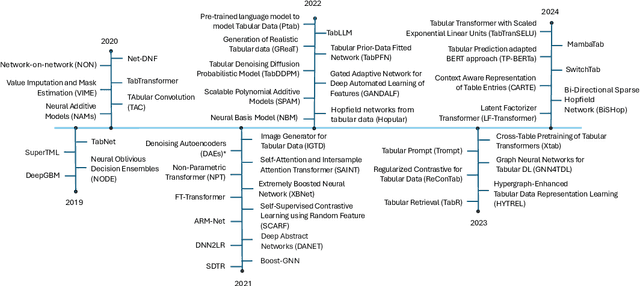

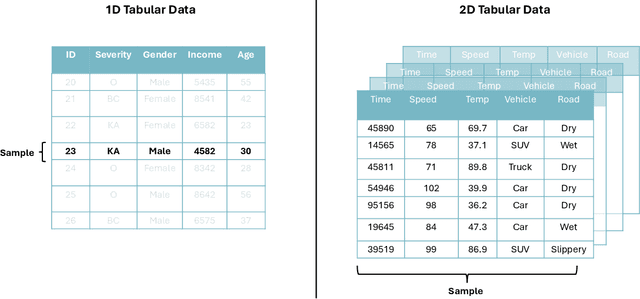
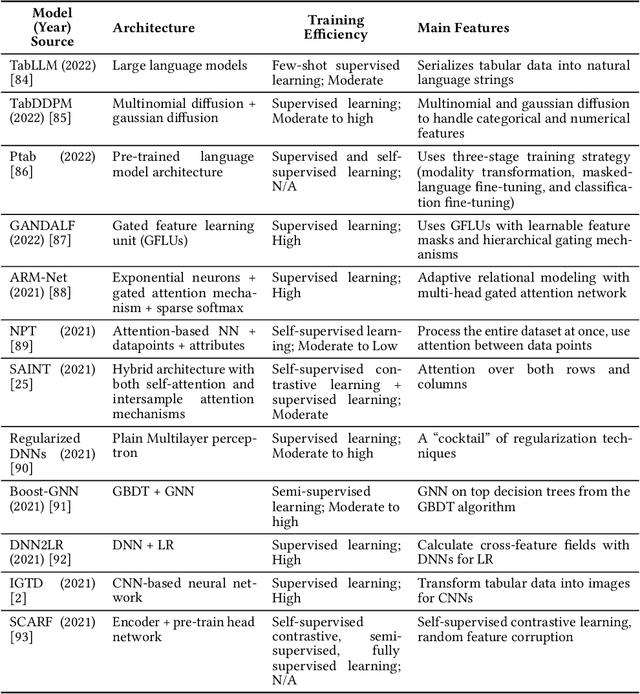
Abstract:Tabular data, widely used in industries like healthcare, finance, and transportation, presents unique challenges for deep learning due to its heterogeneous nature and lack of spatial structure. This survey reviews the evolution of deep learning models for tabular data, from early fully connected networks (FCNs) to advanced architectures like TabNet, SAINT, TabTranSELU, and MambaNet. These models incorporate attention mechanisms, feature embeddings, and hybrid architectures to address tabular data complexities. TabNet uses sequential attention for instance-wise feature selection, improving interpretability, while SAINT combines self-attention and intersample attention to capture complex interactions across features and data points, both advancing scalability and reducing computational overhead. Hybrid architectures such as TabTransformer and FT-Transformer integrate attention mechanisms with multi-layer perceptrons (MLPs) to handle categorical and numerical data, with FT-Transformer adapting transformers for tabular datasets. Research continues to balance performance and efficiency for large datasets. Graph-based models like GNN4TDL and GANDALF combine neural networks with decision trees or graph structures, enhancing feature representation and mitigating overfitting in small datasets through advanced regularization techniques. Diffusion-based models like the Tabular Denoising Diffusion Probabilistic Model (TabDDPM) generate synthetic data to address data scarcity, improving model robustness. Similarly, models like TabPFN and Ptab leverage pre-trained language models, incorporating transfer learning and self-supervised techniques into tabular tasks. This survey highlights key advancements and outlines future research directions on scalability, generalization, and interpretability in diverse tabular data applications.
ChatGPT as the Transportation Equity Information Source for Scientific Writing
Mar 10, 2023Abstract:Transportation equity is an interdisciplinary agenda that requires both transportation and social inputs. Traditionally, transportation equity information are sources from public libraries, conferences, televisions, social media, among other. Artificial intelligence (AI) tools including advanced language models such as ChatGPT are becoming favorite information sources. However, their credibility has not been well explored. This study explored the content and usefulness of ChatGPT-generated information related to transportation equity. It utilized 152 papers retrieved through the Web of Science (WoS) repository. The prompt was crafted for ChatGPT to provide an abstract given the title of the paper. The ChatGPT-based abstracts were then compared to human-written abstracts using statistical tools and unsupervised text mining. The results indicate that a weak similarity between ChatGPT and human-written abstracts. On average, the human-written abstracts and ChatGPT generated abstracts were about 58% similar, with a maximum and minimum of 97% and 1.4%, respectively. The keywords from the abstracts of papers with over the mean similarity score were more likely to be similar whereas those from below the average score were less likely to be similar. Themes with high similarity scores include access, public transit, and policy, among others. Further, clear differences in the key pattern of clusters for high and low similarity score abstracts was observed. Contrarily, the findings from collocated keywords were inconclusive. The study findings suggest that ChatGPT has the potential to be a source of transportation equity information. However, currently, a great amount of attention is needed before a user can utilize materials from ChatGPT
Physics-Guided, Physics-Informed, and Physics-Encoded Neural Networks in Scientific Computing
Nov 14, 2022Abstract:Recent breakthroughs in computing power have made it feasible to use machine learning and deep learning to advance scientific computing in many fields, such as fluid mechanics, solid mechanics, materials science, etc. Neural networks, in particular, play a central role in this hybridization. Due to their intrinsic architecture, conventional neural networks cannot be successfully trained and scoped when data is sparse; a scenario that is true in many scientific fields. Nonetheless, neural networks offer a strong foundation to digest physical-driven or knowledge-based constraints during training. Generally speaking, there are three distinct neural network frameworks to enforce underlying physics: (i) physics-guided neural networks (PgNN), (ii) physics-informed neural networks (PiNN) and (iii) physics-encoded neural networks (PeNN). These approaches offer unique advantages to accelerate the modeling of complex multiscale multi-physics phenomena. They also come with unique drawbacks and suffer from unresolved limitations (e.g., stability, convergence, and generalization) that call for further research. This study aims to present an in-depth review of the three neural network frameworks (i.e., PgNN, PiNN, and PeNN) used in scientific computing research. The state-of-the-art architectures and their applications are reviewed; limitations are discussed; and future research opportunities in terms of improving algorithms, considering causalities, expanding applications, and coupling scientific and deep learning solvers are presented. This critical review provides a solid starting point for researchers and engineers to comprehend how to integrate different layers of physics into neural networks.
 Add to Chrome
Add to Chrome Add to Firefox
Add to Firefox Add to Edge
Add to Edge